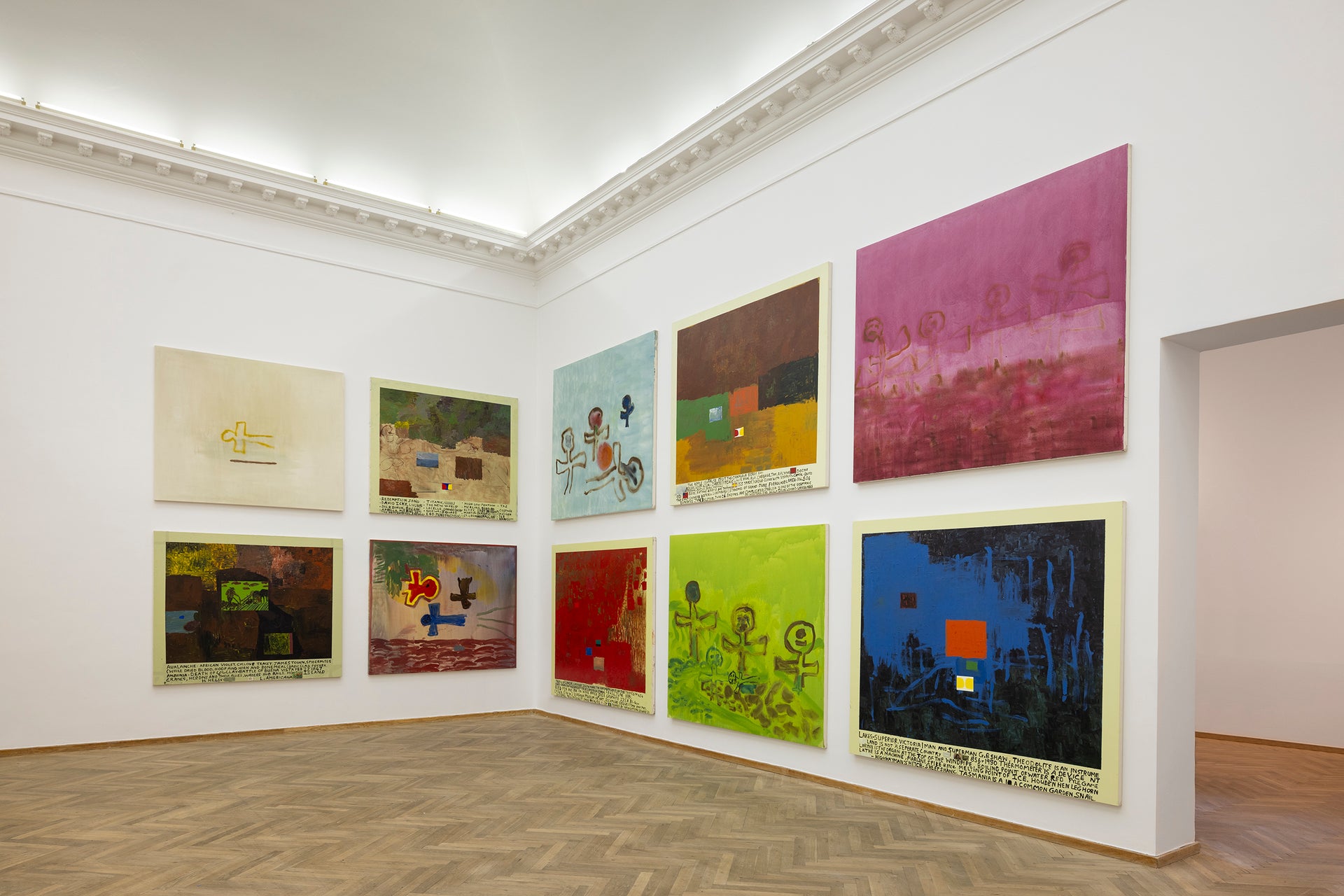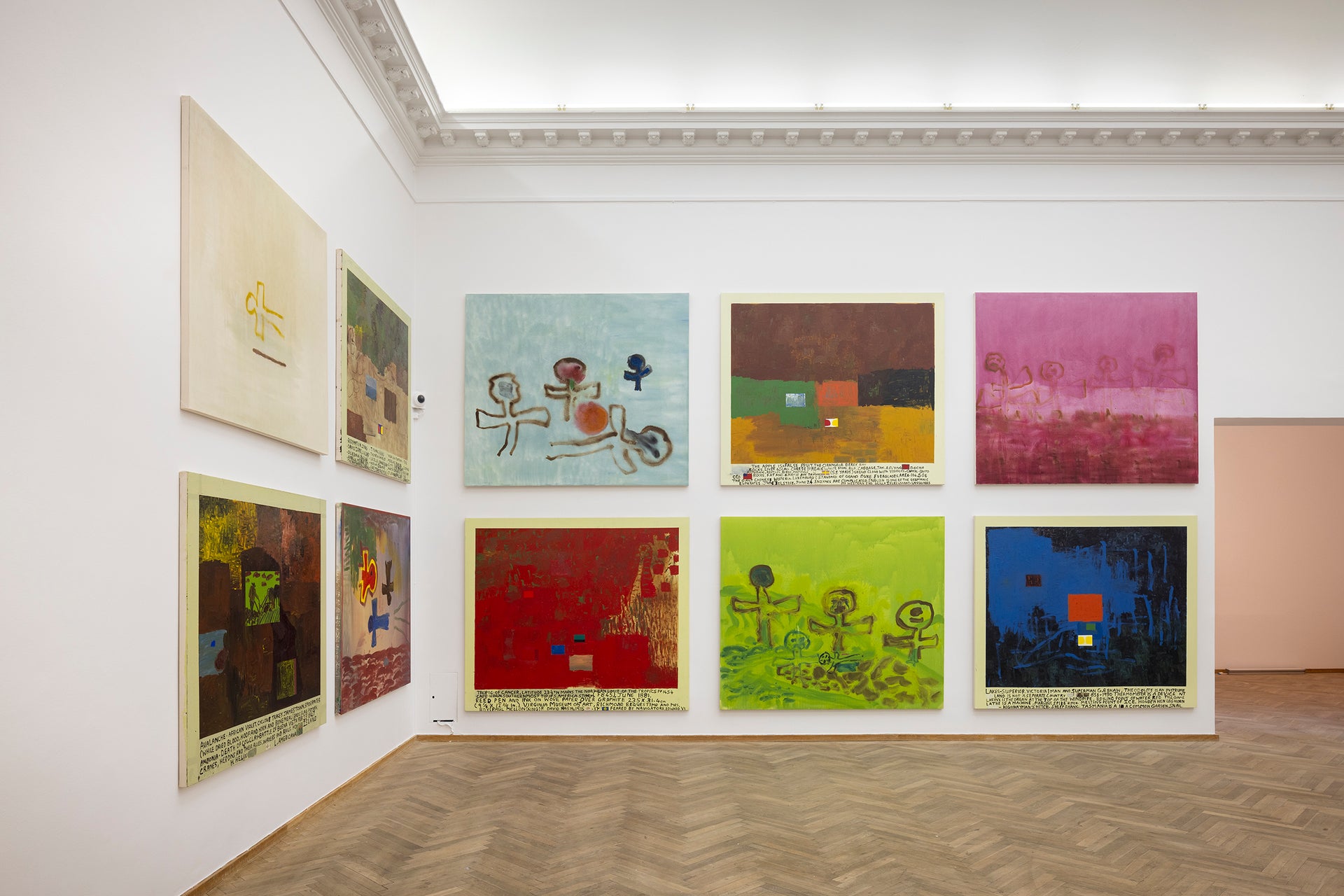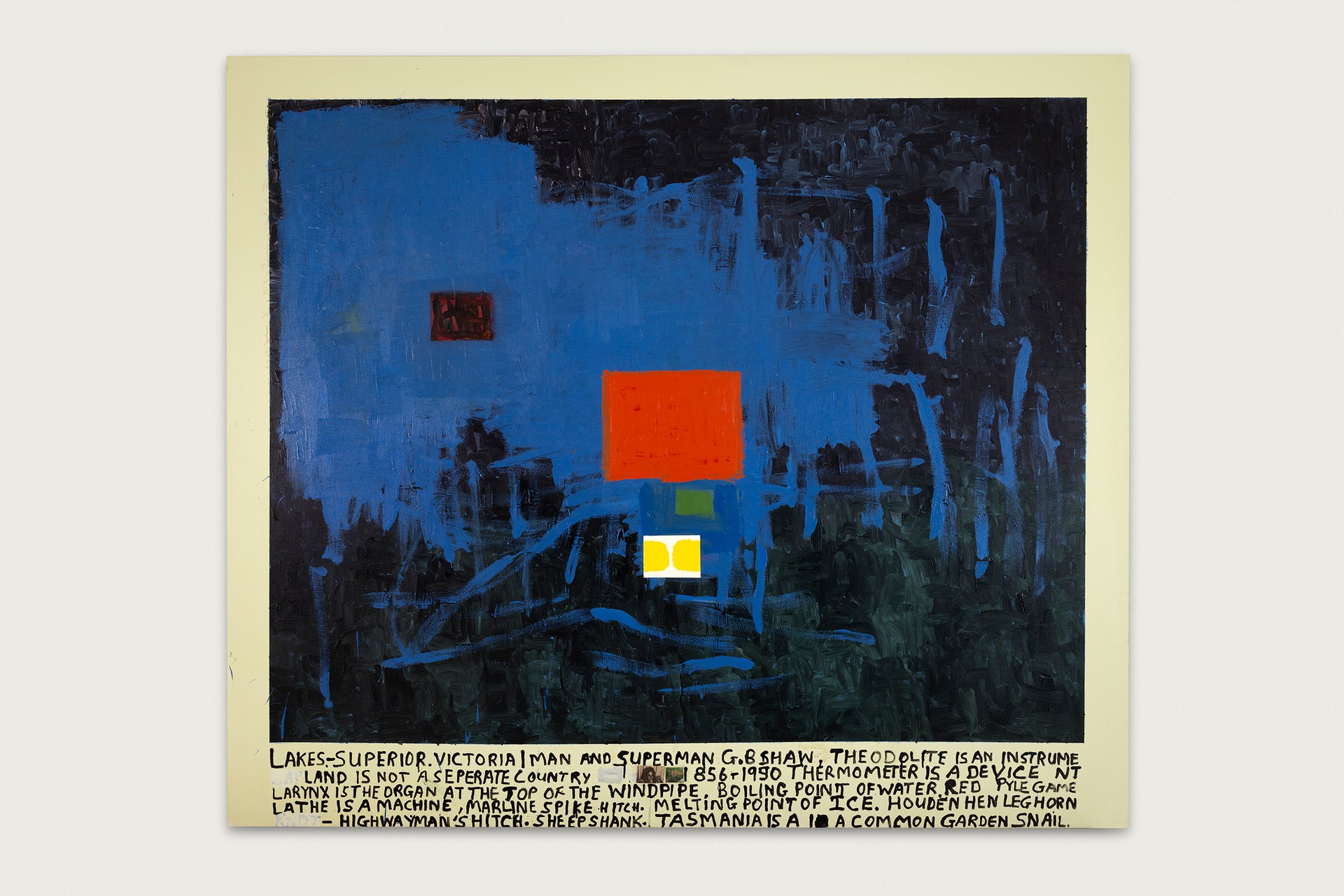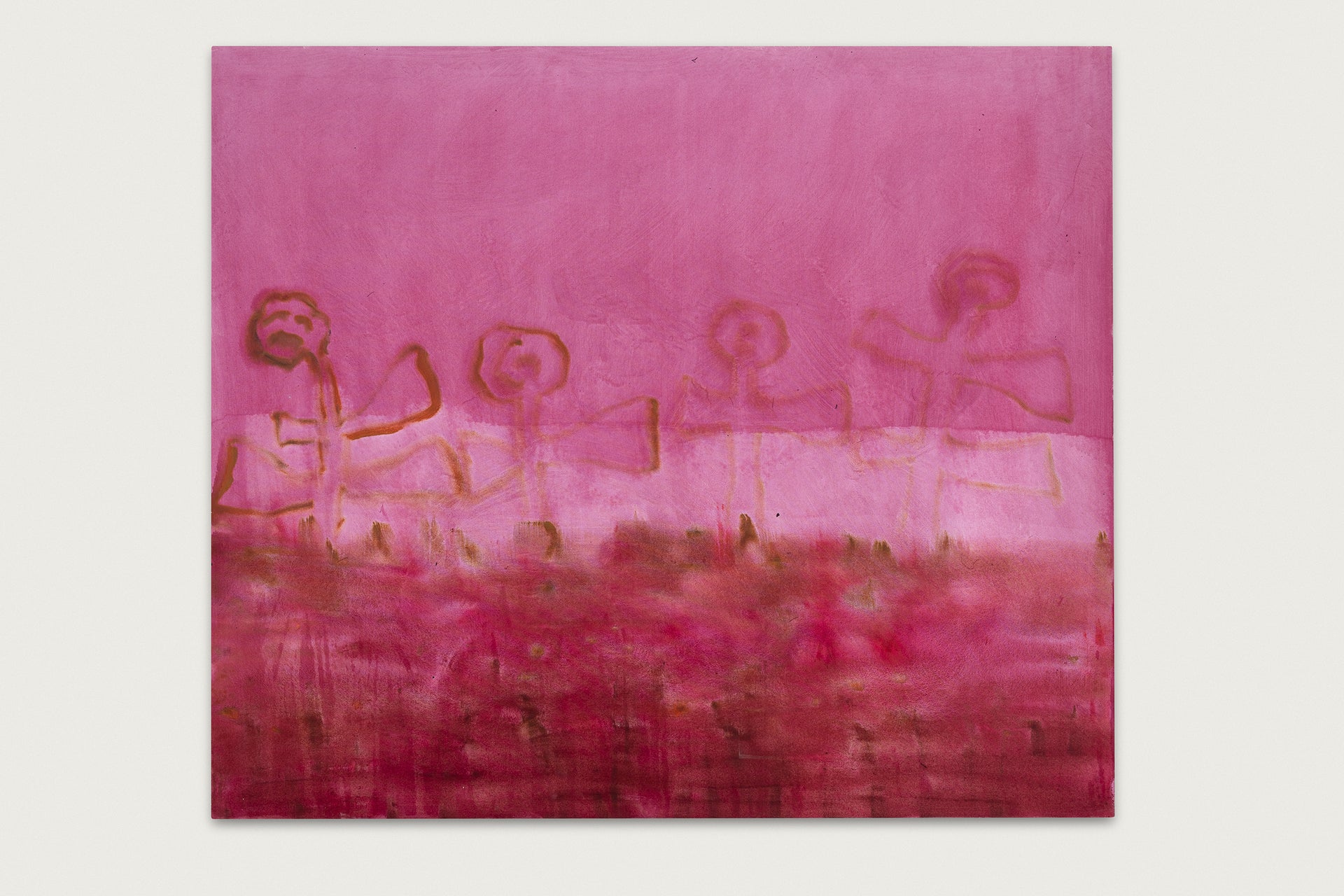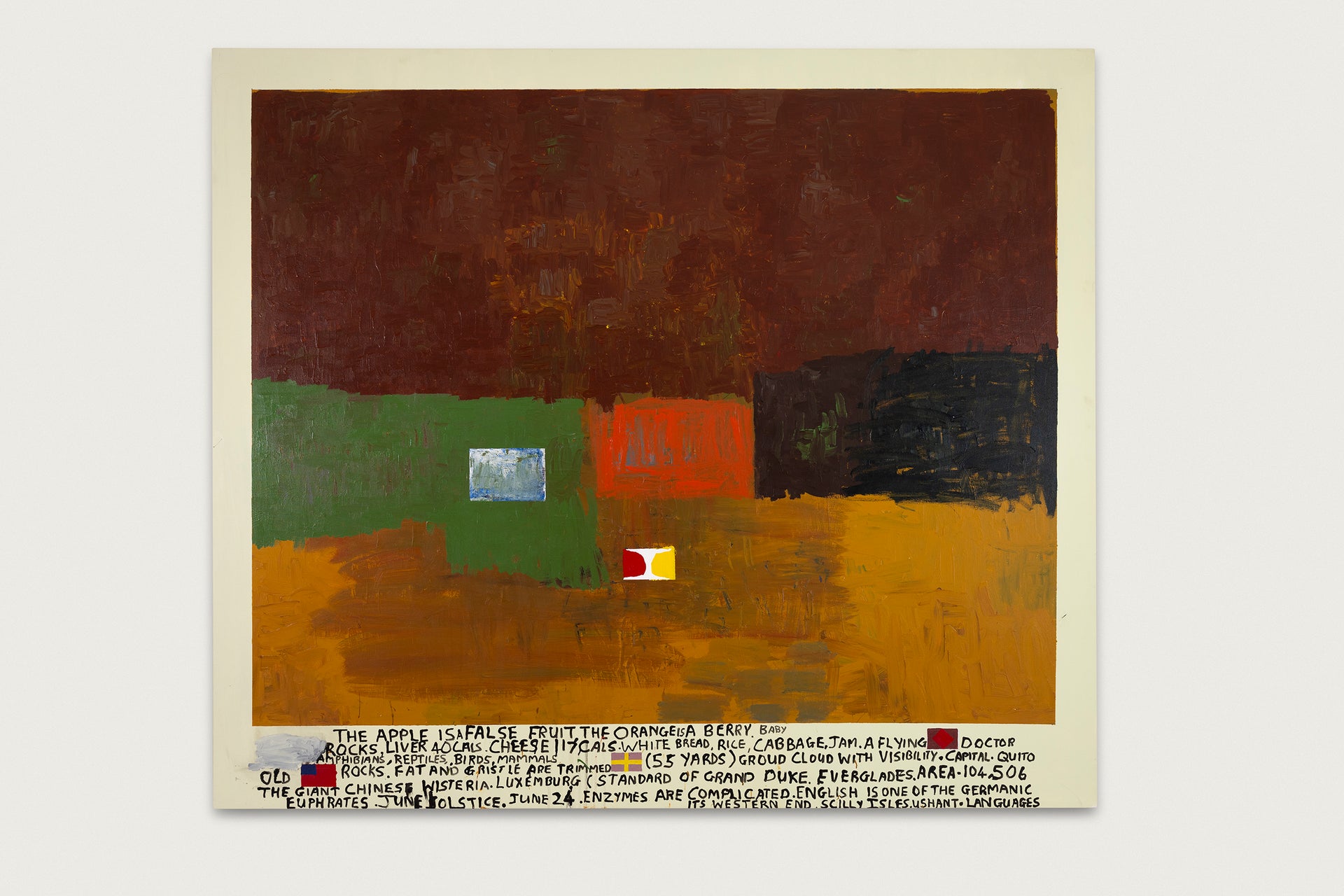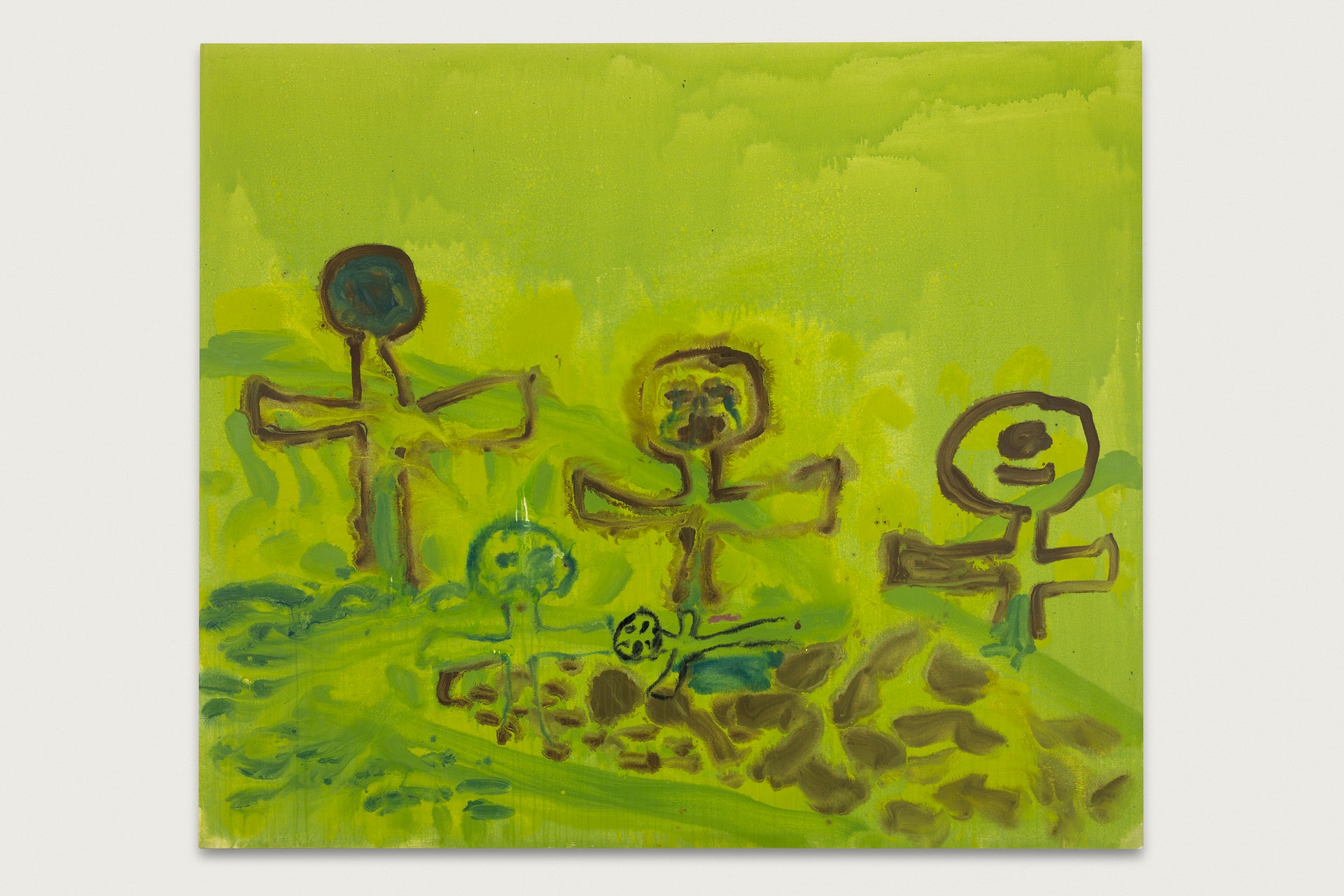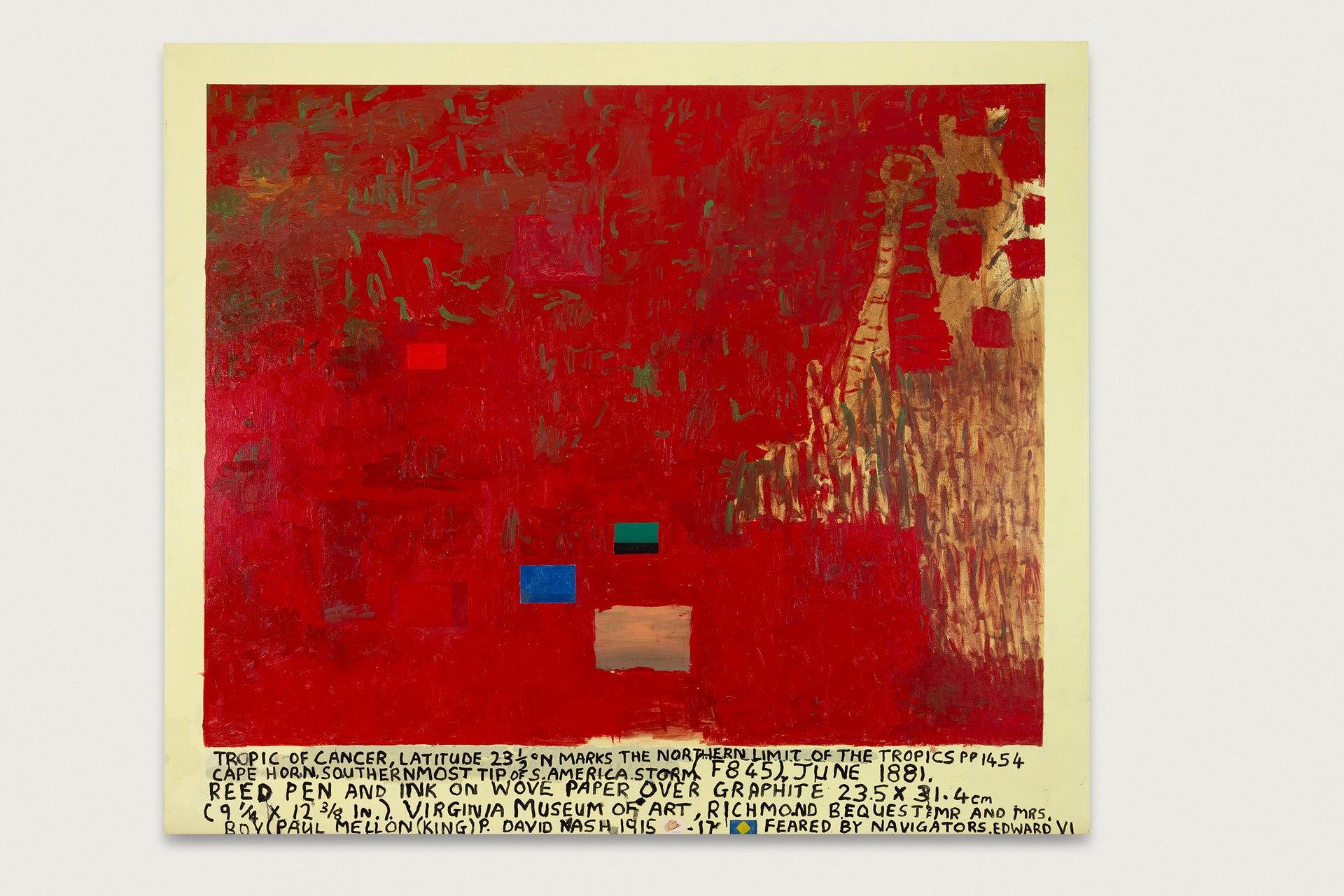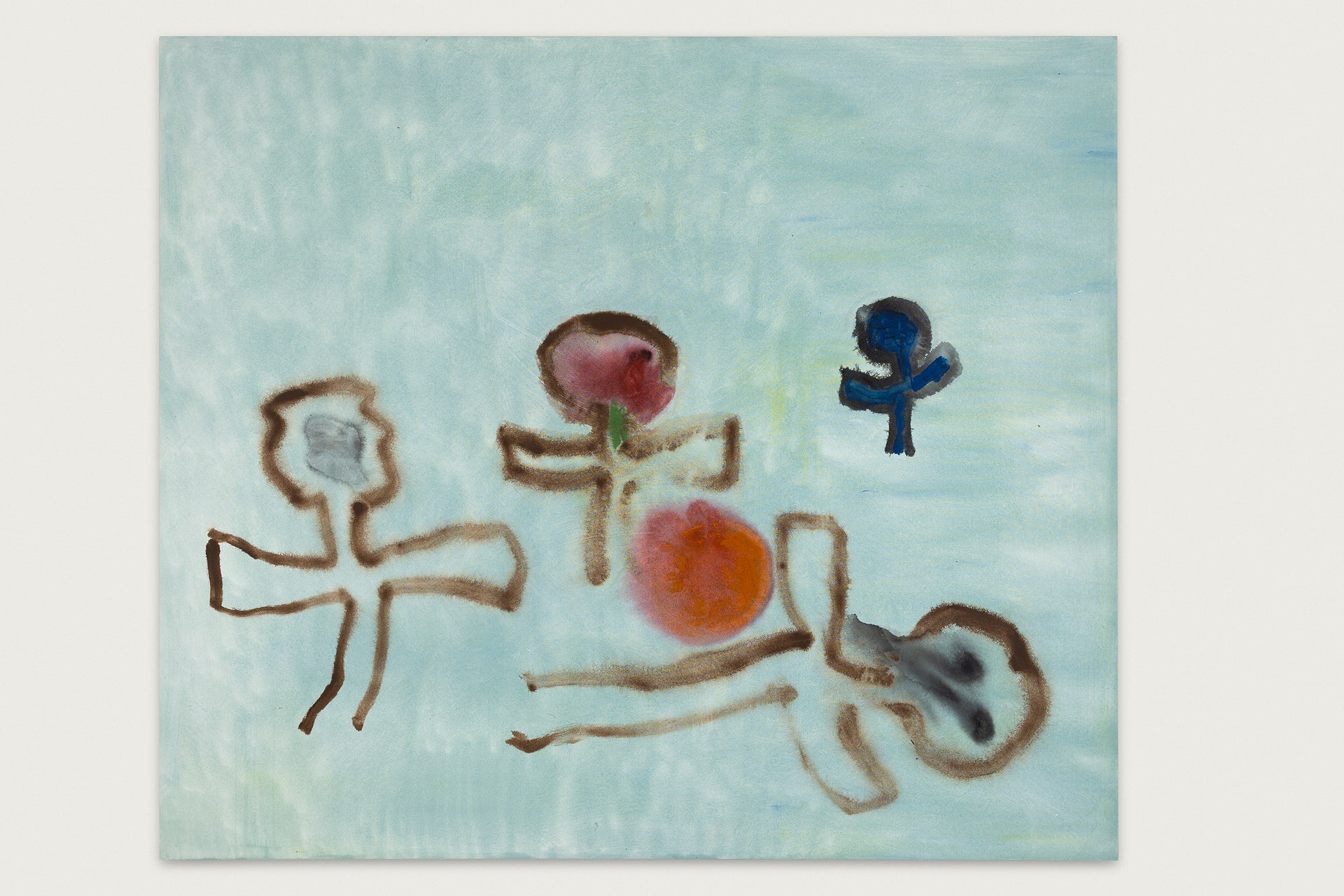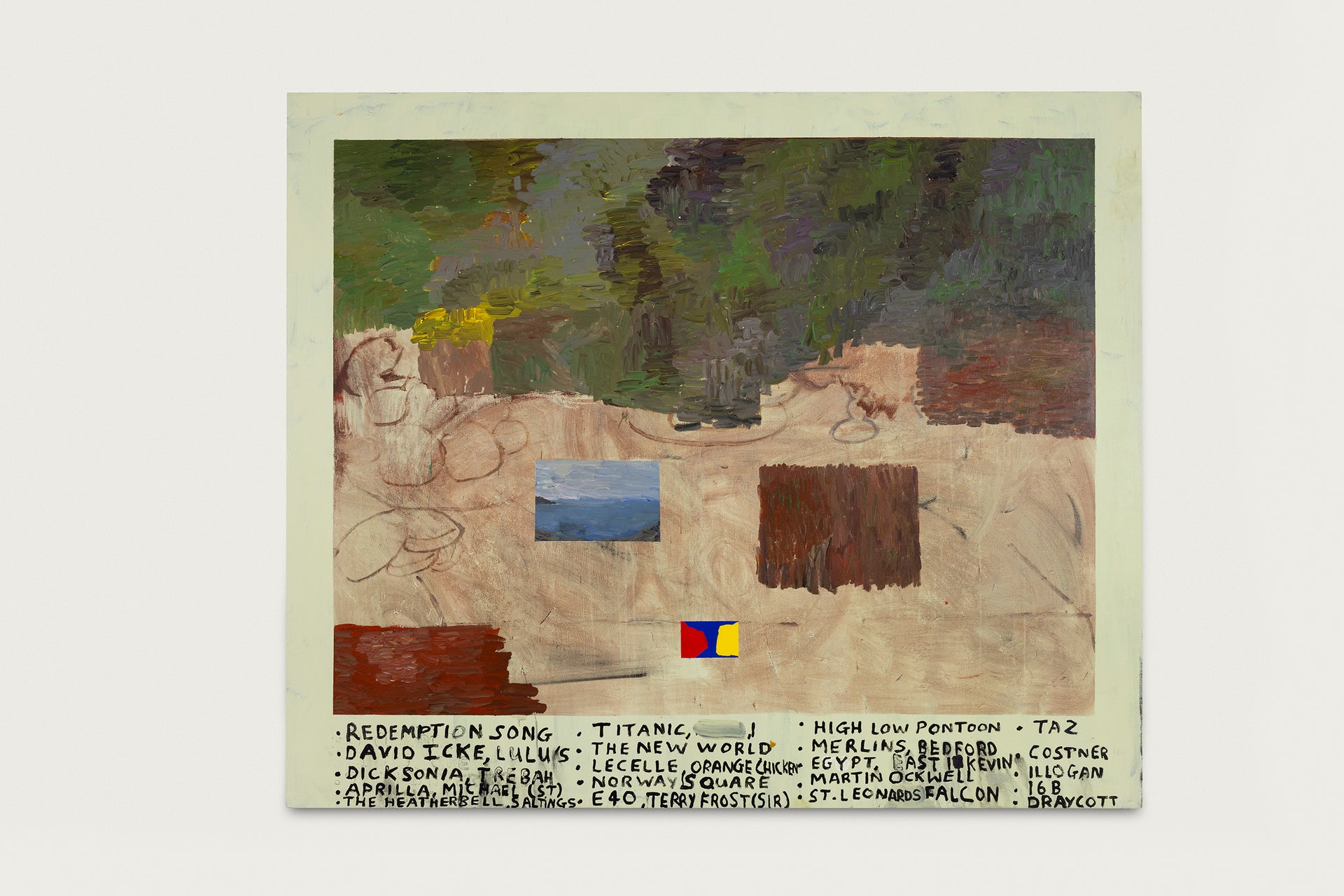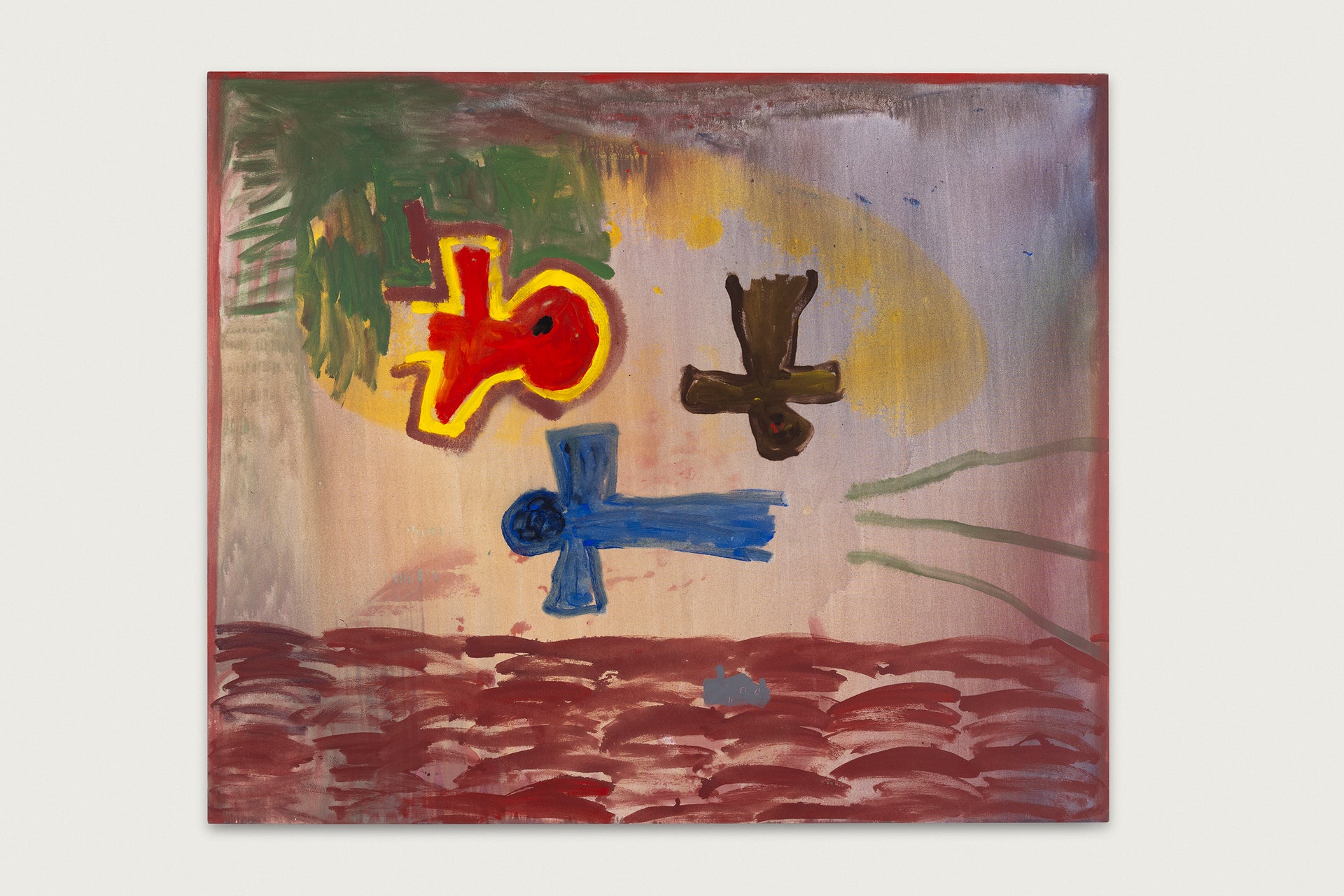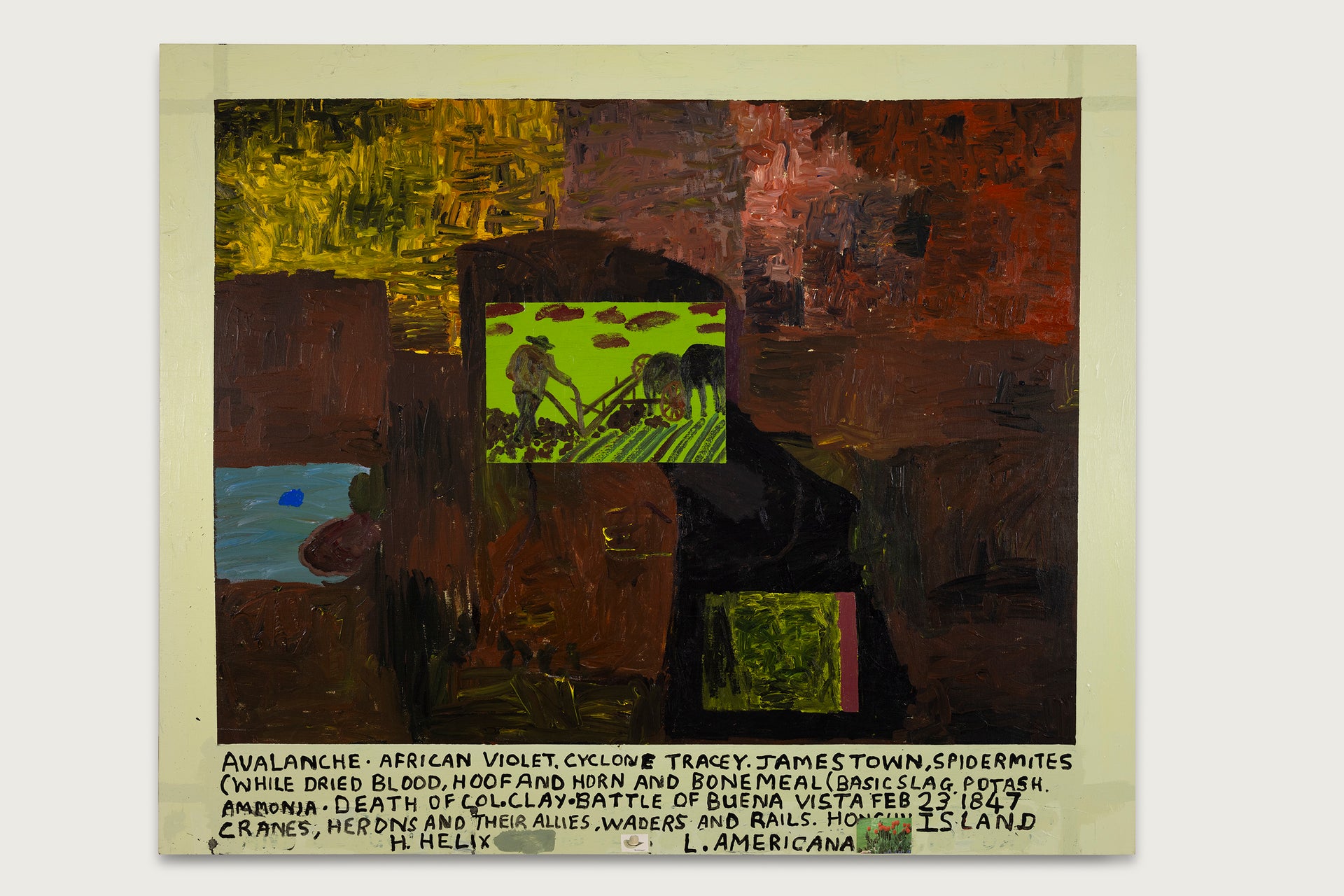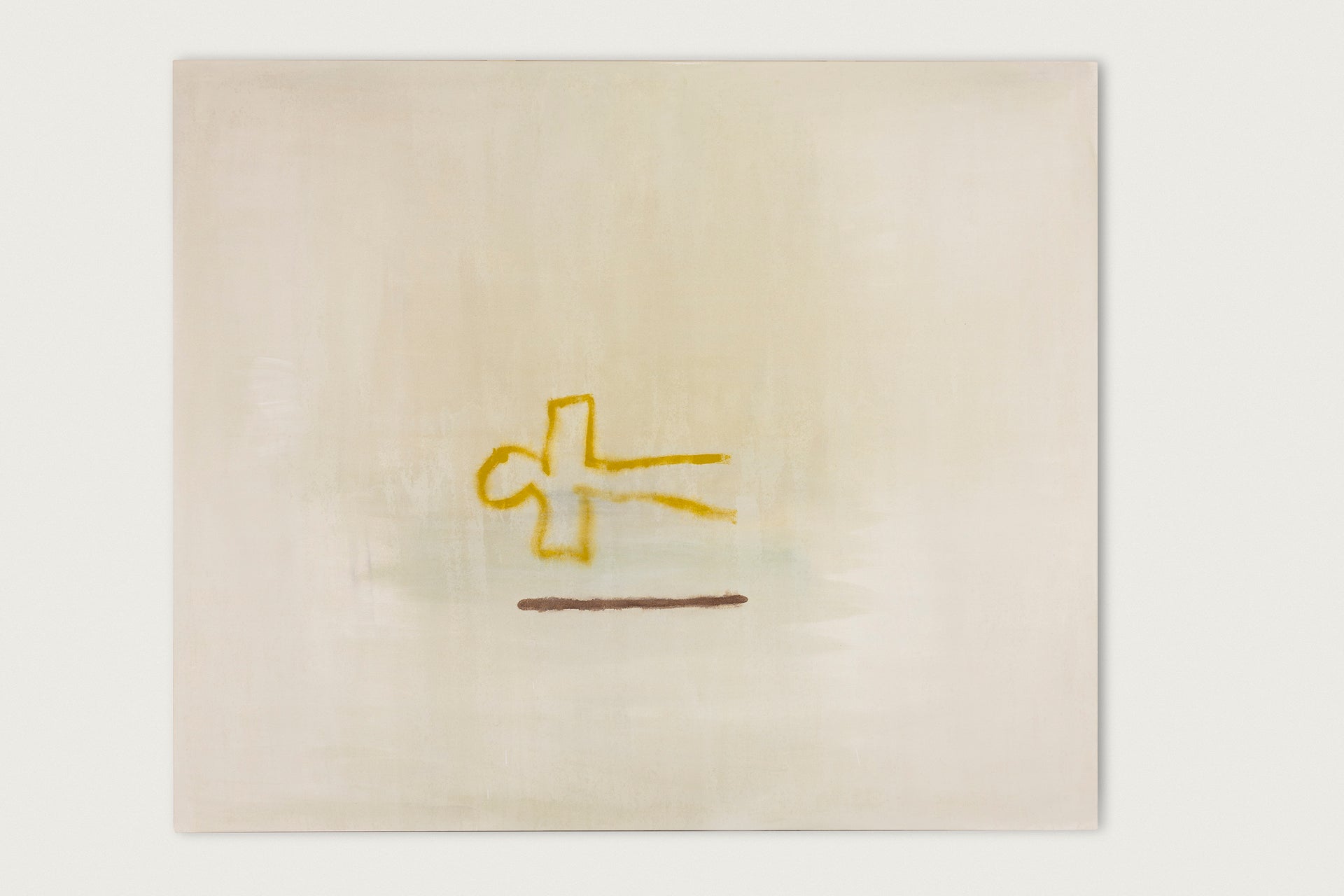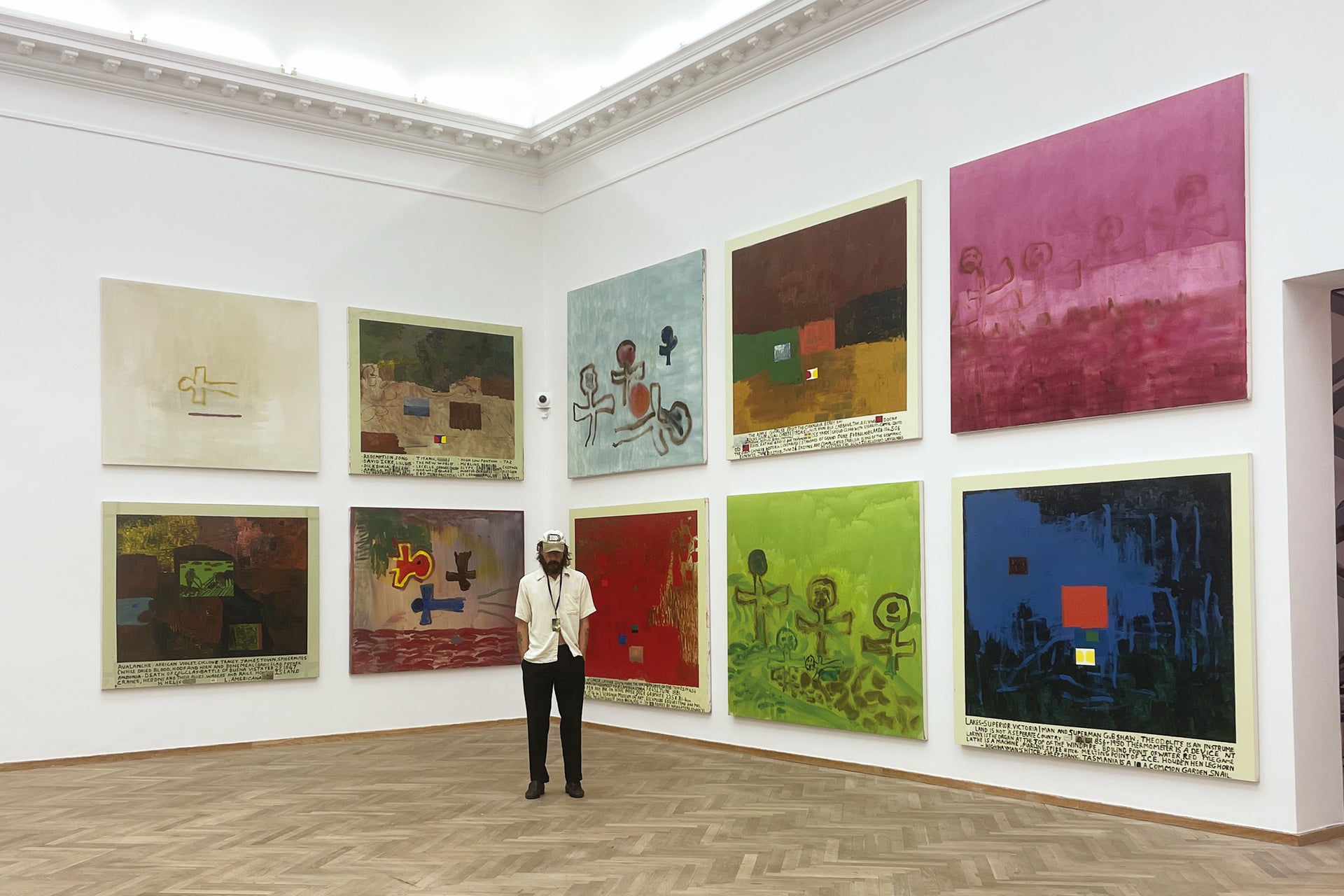V1 Gallery presents
Danny Fox
A solo presentation at CHART Art Fair 2023
EXHIBITION PERIOD: AUGUST 25 – AUGUST 27. 2023
Notes from Danny Fox on the work
This exhibition combines two bodies of paintings that were worked on simultaneously throughout 2022 and 2023. The first body I refer to as ‘Index’ paintings. They derive from the notes that I make in the studio, sometimes on the wall or sometimes in a book. I always liked the way my annotations looked beside other paintings that I have been researching. For example I may make a note below a painting in a book reminding me to explore a certain combination of colours or a note regarding a certain classical painting on a found photograph or a page torn from an vintage catalogue or pornographic magazine. As well as my own scribbles, I often enjoy the composition that is created by text descriptions below an image in a book, I sometimes feel it adds something to the feeling of the image, not necessarily because of what the words say but just their presence in the overall arrangement on the page. I originally explored this aesthetic in my work in 2020 when I made ‘cover versions’ of three famous paintings by Blake, Turner and Stubbs. Continuing from that point I wanted to go further by creating my own imagery and using my own text.
I am constantly searching for source material for painting and found that a box of dusty junior encyclopaedias from the 1960s was a gold mine for images with text descriptions. The images seemed to be somewhat arbitrary - attached to a description, selected alphabetically, but being from the 1960s the viewpoint of the world was one that doesn’t exist today. The images themselves are of course antiquated, but the selection gives a strange perspective of life, specifically of British life and Britain’s place in the rest of the world.
I approached the application of the paint the same way I did the text, trying to recapture the accidental nature of the ‘process’ rather than the result. Looking at my palettes I could see interesting textures where I had mixed colours and I liked something about those unintentional marks. Similarly to the way I often make text notes in books, I sometimes use pages as palettes to mix on and will sometimes pin a page of a book or a print out to the wall if I like the way the mixed paint has created some kind of balance with the image. At first I kept a figurative element to the index paintings. One painting shows a man ploughing a field with a pair of horses, another painting has an isolated seascape - In this painting (the first I made) the notes are more personal than the others. As an exercise to conjure imagery for figurative painting I would think of a point in time, in my life - childhood- say age 9 to 11 and write something down, from there I would play a kind word association and write not the next word that came to mind, but instead intentionally resist that word and go some level deeper into the memory, this would in turn open the doors to a more abstract version of the past, rather than the one that is readily available to the subconscious. I liked the painting, but the personal aspect of it bothered me, I felt that actually, the reason I liked the incidental nature of the annotations and palettes was that they were not personal and gave some welcomed respite to the constant mining of ‘self’. So, from that point I started to paint not a memory but a landscape, a landscape of the mind. The nostalgia of the dusty encyclopaedias, of a Britain that no longer exists, an unfinished history of the world. I’m trying to enter the place in my mind that is the source of all the art I have ever made. It is a room in my head. It is a library and a junk shop. It is the safe place, the bomb shelter, the black box. It’s a cave I crawled into as a child. I know that sounds paradoxical as that does make them ‘personal’ paintings, but then maybe that’s the point of abstraction, it’s personal without being humiliating.
Whilst flicking the pages of the encyclopaedias I would pick the text at random or as randomly as I possibly could, just hoping it wouldn’t sound poetic, which is harder than it sounds and invariably they end up having a poetic edge to them. The encyclopaedias are written for children, like an alien’s guide to planet Earth and human beings, there are lots of maps and flags, these play into the imagery a lot. The flags I have used are not markers for any place or company, just invented shapes for the sake of the painting. The badge with two semi circles is inspired by the paintings of Sir Terry Frost, whose work was a constant backdrop growing up in Cornwall. Without intention the text ends up becoming a description of the painting although at the time of execution there is no relation. Come to think of it, I have always strived for an element of at least perceived ‘accident’ in all my paintings. Some people call it faux naïve, I’ve always hated that term. In this case the accident is premeditated but uncontrollable all the same.
The other half of this exhibition consists of a series of five sparse, washy - almost watercolour like paintings. The series documents five stages of a death. The saga begins with a pink landscape depicting ‘The Death of a Loved One’, the character fading away from left to right. The second painting reveals ‘The Spirit Leaving the Body’. We see a ball of light or energy exiting the being, followed by a ‘Ceremony' attended by others in a vivid green field, next we witness the ‘Ascension’. The character joining winged spirits in the sky. Finally, ‘Oblivion’ shows the final resting place of the protagonist, at eternal peace.
These paintings were not made from a religious perspective, all though they do seem to share some religious concepts. They are just the painters attempt to visually contextualise the death of a family member. Often death is portrayed metaphorically in a painting, usually with a skull or skeleton. The spirit is harder to paint, although there is a ‘form’ in the painting, a winged angel flower type creation, the energy and feeling of the spirit is shown in the colours and movement of the paint.
